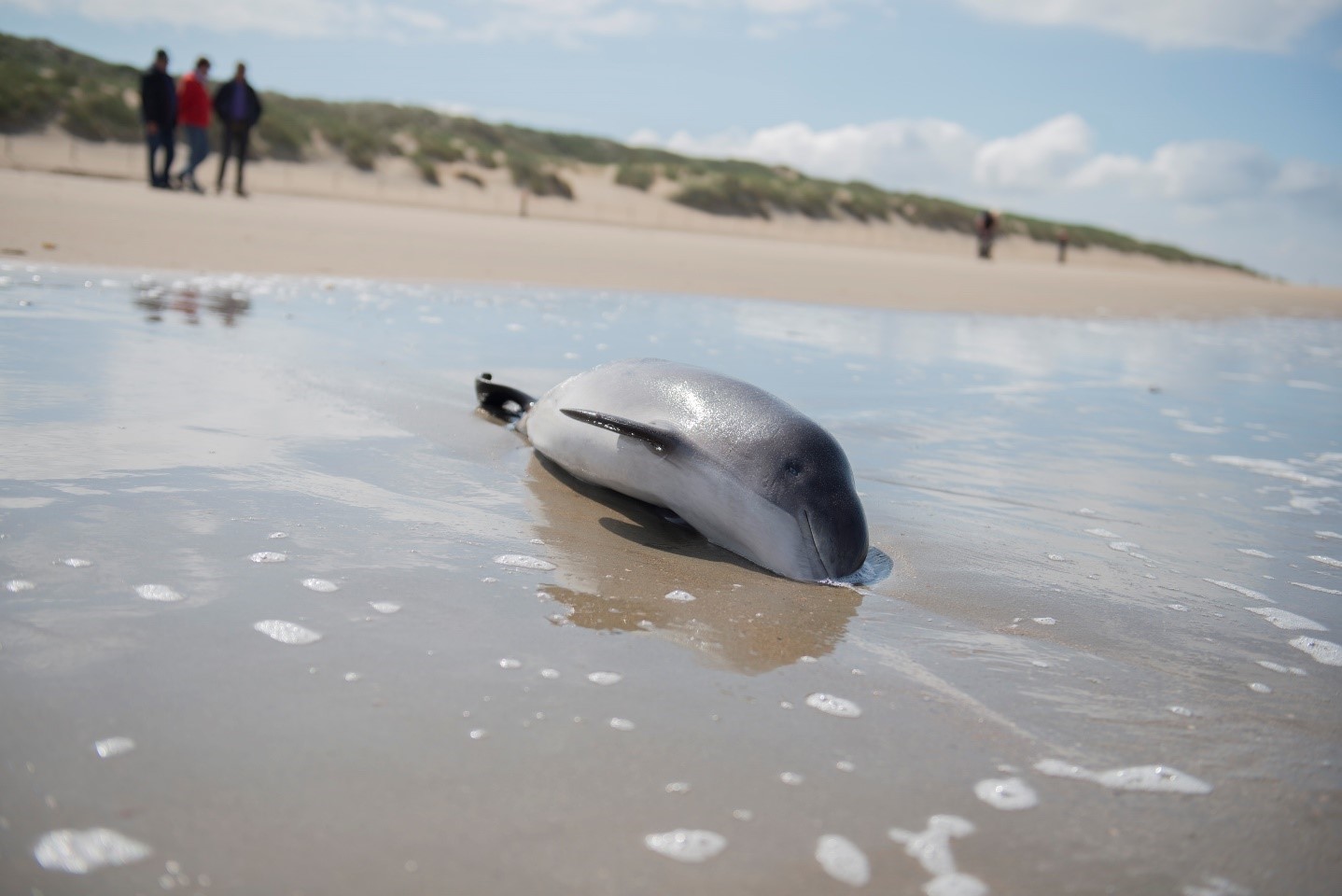A new study published in the leading scientific journal Biological Conservation reveals a striking increase in the number of stranded porpoises along the North Sea coast. Scientists from the various North Sea countries compiled their data for this purpose. This also provided insights into the distribution and mortality of the different age groups, but does not yet allow definitive statements to be made about the effects of different human activities.

An international study led by Utrecht University, in which RBINS participated, revealed that more than sixteen thousand dead porpoises have been registered on the North Sea coast since 1990. More than 1500 of these were washed ashore in Belgium. In the Netherlands, with its much longer coastline, the highest numbers washed ashore. The researchers discovered that since 2005 porpoise strandings have become remarkably more frequent in the southern North Sea, while the number of strandings in the more northerly parts of the North Sea hardly changed.
Valuable information through strandings
It is not easy to study porpoises at sea. Researcher and marine ecologist Mariel ten Doeschate, connected to the Scottish stranding network, says: “Research is being done into the numbers and distribution of live animals, but this can only be done in limited periods of time. Strandings, on the other hand, are recorded throughout the year, and have been for decades. We can also determine the sex and age of stranded animals”.
Although the increase in the number of strandings coincides with an increase in the number of sightings of live animals in this region, it cannot simply be concluded that the continuing sharp increase in the number of strandings is only due to the presence of a larger number of animals (where the mortality rate could have remained the same). Indeed, the number of animals at sea is much more difficult to determine accurately than the number of strandings, which means that the two sets of data are not directly comparable and that the strandings are therefore supposed to better reflect what is happening in the population.
Impact of human activity
There is uncertainty about the possible effects of human activities on the numbers and distribution of porpoises. A potentially important factor is a changing climate, with changes in the food situation. Research programmes are also being carried out into the impact of the construction of offshore wind farms. It is important that data collected in countries around the North Sea is pooled: this has never happened before. Researcher Lonneke IJsseldijk (Utrecht University): “Our study has provided new and valuable insights and is a first step in improving our knowledge about the distribution of different age groups, seasonal and age-specific mortality among porpoises in the North Sea. Among other things, the study showed that more newborn animals stranded on German and Danish coasts, while in the Netherlands, Belgium and southern England it was mostly young males.
Research following this study will analyse additional information, including on health and disease.
This research is a collaboration between the Faculty of Veterinary Medicine of Utrecht University, the Scottish Marine Animal Stranding Scheme, the UK Cetacean Strandings Investigation Programme, the Department of Bioscience of Aarhus University, the Institute for Terrestrial and Aquatic Wildlife Research of the University of Veterinary Medicine Hannover, the Royal Belgian Institute of Natural Sciences, Naturalis Biodiversity Center, the Cetacean Atlas of Denmark, the Globe Institute, the Natural History Museum of Denmark en the Fisheries and Maritime Museum Denmark.
